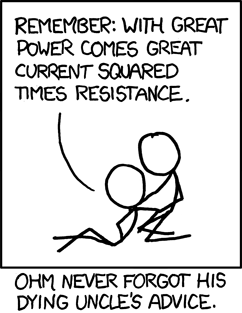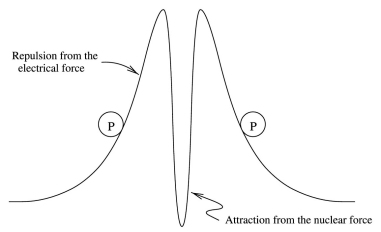Homeworks 5
| ||||||||
Homework 5 due on 10/05/2009 is the attempted solution to our 5th assignment in the course Introduction to Astrophysics. This assignment is due on Monday 10/05/09 and was assigned on 09/28/09. Solutions were created by Group 1 (RyanT, KimW, SaraC, ZackM, TiaraD, and MatthewD) to be completed by 10/09/09.
This assignment covers Chapters 8, 9, and 10 in the book, Lectures 14 through 16. The topics in this assignment range from spectral type classification of stars, to the fundamental forces in nature, to the different types of nuclear fusion in stars, such as the CNO cycle.
Problem 1
The spectrum of a main-sequence star has strong hydrogen lines, weak lines of neutral helium, and weak lines of metals. What is the spectral type of the star? What is its approximate temperature? Suppose that the absorption lines of iron are much stronger than normal for a star of this spectral type. What could you conclude?
Lecture 14, Slides 3 and 14. Chapter 8, Fig 8.11 Some Helpful Links: Hyperphysics on Stellar Spectral Types Interpreting Stellar Spectra
This star fits the description of a Type A star, with an approximate temperature of 9000 Kelvin. If the absortion lines of iron were much stronger than normal in a Type A star, then one could conclude that either the star has a relatively high iron composition.
Problem 2
Compare the strong nuclear force to gravity and the electromagnetic force. Specifically, what kind of material or particle does each force act on? Are they short range or long range? Do they attract or repel? Are they strong or weak forces? If, as claimed, gravity is much weaker than the strong nuclear force, why do we notice gravity but not the nuclear force in our everyday lives?
The strong nuclear force acts on quarks, antiquarks, and gluons. It has a very short range, only acting in the proximity of one femtometer. It attracts in this femtometer range, but must, on an even smaller range, repel very strongly or the nucleons in nucleii would be infinitely close together. It is the strongest of the four fundamental forces. Gravity has an infinite range, acts on all particles, and always attracts. The electromagnetic force can attract or repel, has an infinite range, and acts on charged particles. The electromagnetic force is stronger than gravity, but weaker than the strong force. We notice gravity and not the strong nuclear force because of the strong force's infinitesimal range. We rarely interact within one femtometer of an object.
Lecture 15, Slide 9
Problem 3
The solar luminosity is erg/sec, derived from the fusion of hydrogen to helium. What mass of hydrogen is consumed each second to produce this energy and how many hydrogen nuclei are being turned into helium nuclei each second? How long does the sun live (assume that about 1/10 of all hydrogen gets burned).
Lecture 16, Slide 9 A Helpful Link on Calculating the Lifetime of the Sun http://curious.astro.cornell.edu/question.php?number=389
Knowing that is takes 4 hydrogen nuclei to forge 1 helium nuclei, and that 1 gram of hydrogen is converted into 0.9929 grams of helium in the fusion process, and that only 0.71% of the hydrogen mass is converted to helium, use the formula E=mc^2 to calculate the mass of hydrogen consumed each second. 3.84x10^33 erg = m(0.0071)c^2 Sove for "m" m = 6.009x10^18 grams of hydrogen consumed each second If 1 gram of hydrogen contains 4 hydrogen nuclei, then the sun turns roughly 2.4x10^19 hydrogen nuclei into helium nuclei per second. The sun's lifespan is given by the equation t = E/L, where E is energy and L is luminosity, and t is time in years. Assuming that 10% of hydrogen gets burned, t = (0.1)(0.0071)(6.009x10^18g)(3x10^8m/s)^2/(3.84x10^26J) = 999935 years.
Problem 4
Describe the CNO cycle of thermonuclear reactions, giving the formula for each of the steps in the chain. What do the symbols , , , , and mean in the formulae? Estimate the energy release per gram material. Estimate the life time of a star with 5 M.
Lecture 16 Chapter 10.3 Stellar Energy Sources
The CNO cycle of stars fuses hyrdrogen to helium [for stars in the main sequence with greater mass than our Sun]. It may be chemically represented as:
In which the Net Effect is:
Where 12C is Carbon-12, 13C is Carbon-13, represents a photon, v represents a neutrino, and e represents a positron.
Problem 5
What are the most important factors determining which nuclear reactions take place in a star and how fast they take place? Why are they important? Why does the sun obtain its energy from the fusion of hydrogen to helium instead of some other nuclear reaction?
- Chemical Composition: If hydrogen is the only element present, only nuclear reactions involving hydrogen are possible.
- Density: At higher densities nuclei start off closer together and so have less “distance” to travel to get to the top of the hill.
- Temperature: Nuclei can overcome electrical repulsion if they move towards each other at high speed. The higher the speed, the more likely they will get close enough for the nuclear force to take over so that they fuse. Nuclei move faster at high temperatures. Temperatures need to be millions of degrees… or more.
The sun obtains its energy from the fusion of hydrogen to helium instead of some other nuclear reaction because it is a main sequence star with a mass of 1 M. The sun is also made up of ~74% Hydrogen and 24% Helium. Main-Sequence stars with masses less than or equal to the sun’s mass fuse hydrogen to helium through the proton-proton reaction:
3He is an isotope of helium with 2 protons and 1 neutron. γ is a gamma ray.
Net effect:
Lecture 16, Slides 4 and 6


















